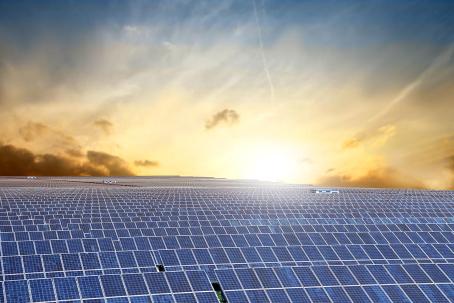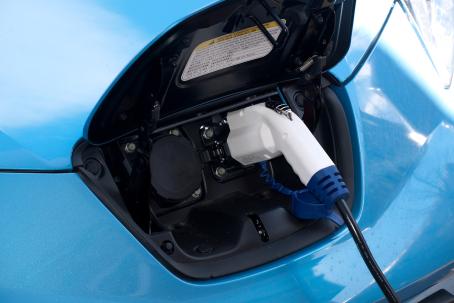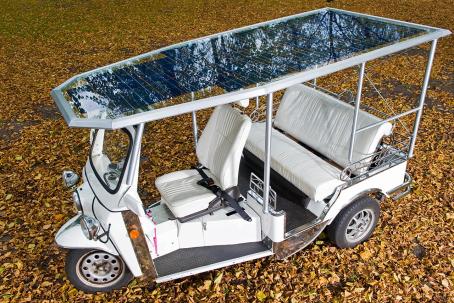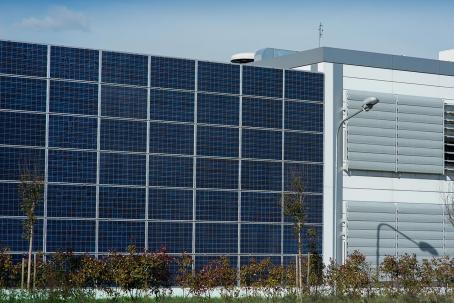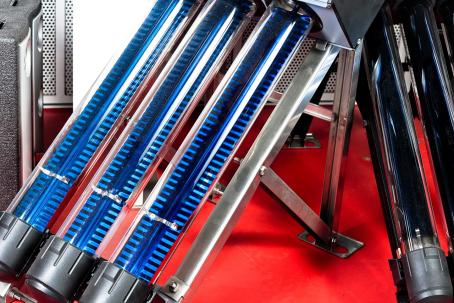
The Future of Solar Energy
7 min read
Solar Power Development
Vast fields of photovoltaic power plants could be in the future replaced by the concentrated photovoltaic with far greater efficiency.
Being one of the fastest-growing renewable energy sources, it has a variety of means of energy extraction from sunlight at its disposal. Solar power is used to produce heat or electricity and it is going in two directions. In one, we have monumental projects which cover many square kilometers. In the other, solar panels are being integrated into buildings, cities and vehicles. New possibilities keep arising during its development. In the future, this branch may get a boost from the introduction of new nano-materials.
General Trends
With the increase number of electric cars will also increase the number of charging stations powered from the solar ports or solar trees.
Solar power has been growing at an unprecedented rate of 25% a year and there is a good chance that by 2100, it might be supplying up to 70% of the world’s energy.
There is no question that the potential of solar energy is vast. Geographically, the most interesting regions to develop solar power are in the Middle East and North Africa. Especially thermal solar power plants are expected to rise here, since they can use thermal accumulators to better match the needs of the grid.
Thermal collectors are suitable for use in places where there is no connection to the electrical grid. As coal prices rise, they are increasingly used for water heating in various industrial processes.
Households consume up to 40% of all the energy in the grid. Photovoltaics may help to reduce this number significantly. The newest trend of building integrated photovoltaics (walls and roofs made of solar cells) in combination with passive solar systems (which already can reduce the consumption of one house by 75%). New approaches in architecture may finally result in new houses being energetically completely independent. Integrated photovoltaics does not use up any additional space and its concept can be easily applied to whole city blocks or cities as a whole.
As a part of the trend of saving space, solar shelters and solar trees with automatically moving solar leaves emerge. They are built over car parks and in the future, they will be used to charge electric cars and in combination with accumulators that can light the streets.
Concentrated photovoltaic systems stir a lot of interest. New multi-junction thin film cells can reach efficiencies of 40% in concentrated light. If light were concentrated with linear Fresnel reflectors, a PV farm equipped with this type of cell could have twice the efficiency of a conventional PV farm of the same area. Since the area of such a cell is 500 to 1,000 times smaller, investment savings would be significant.
Large-Scale Projects
Since the energy falling on even a fraction of the Sahara desert is more than the global demand, the Desertec company plans building a series of thermal solar power plants, mostly with parabolic trough collectors, which, upon completion in 2050 should cover up to 15% of Europe’s demand (an installed capacity of 100 GW). To get the power to Europe, the construction of 20 HVDC (High Voltage Direct Current) power lines is also planned to secure the connection. The project should cost about USD 580 billion.
Building Integrated Photovoltaic is a new trend in the buildings construction where solar panels directly create roof or walls of the building.
Another large-scale project is a space solar power station. It could benefit from the stable irradiation of 1,367 Wm-2, 24 hours a day. Two major problems have to be overcome, however, before it can be built: to find an economical way how to transport the solar panels to the orbit and to find a way how to send the generated electricity back to Earth. Both of them may be solved with the help of a space elevator that would be able to transport material for as little as USD 10 per tonne to the orbit. The photovoltaic power station then may be used as the counterweight. For a space elevator to be built strong enough, carbon fibers for the tether have to be developed. To send the generated energy back to Earth a concentrated microwave beam may be used which would be aimed at a base station on Earth that would transform it into electricity.
An interesting energetic potential can be found in the energy of hot air ascending inside of a tower or a chimney. This concept is called a solar updraft tower. In this concept, air, which is heated in an extremely wide circular greenhouse, passes through turbines while ascending through a tower several hundred meters high. An installation 7 km in diameter and with a tower 1,000 meters high could generate up to 200 MW of electricity. An experimental power plant of this type was built in Manzanares in Spain, yielding a maximum of 50 kW. Further solar updraft towers are planned to be built in China, Australia and other countries.
Toys
The new absorbing materials increasing efficiency of the vacuum collector are still developed in the area of warm water heating.
The development of technologies to better concentrate and convert sunlight into a usable form of energy is never-ending. The recently developed nanotechnologies that allow the production of so-called metamaterials, which have unique properties, are very promising. Chinese scientists, for example, have built a “pocket black hole”. It consists of tiny resonators that are able to change the direction of electromagnetic waves, direct them towards the centre of the collector and transform them into heat. So far, only microwaves can be transformed and a visual spectrum version has yet to come.
Golden nanoantennas absorb infrared radiation and directly transform it into AC electricity, unfortunately at a completely useless terahertz frequency. When suitable nanorectifiers are developed, which would help change the frequency to a usable range, this technology may become a very cheap and flexible source of energy. One could even harness the Earth’s radiation at night using this technology. In the simple and inexpensive roll-to-roll manufacturing process, nanoantennas are in effect stamped on a substrate, which can be anything, from car chassis to clothing.
Unmanned maintenance-free air vehicles powered by the Sun could cruise in high tight layers of the atmosphere, providing a cheap alternative to telecommunication satellites.



